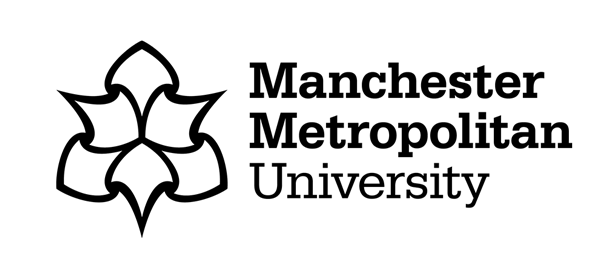
My PhD research is the first in-depth scholarly study of the painter Karl Weschke (1925-2005). He’s mostly unheard of, yet he played a significant role in formations of Modern British Art in post-Second World War St Ives, and wider West Cornwall. Weschke was born in Germany and came to Britain as a Prisoner of War in 1945. After involvement in a progressive rehabilitation programme, including lessons in art history, his path was set – he was to become an artist. Now is not the time for lengthy biographical detail, but if you are indeed interested, you can read my recent introduction to Weschke for Art UK here.
When I started my PhD, little did I know that it would be defined by a global pandemic. With museums, galleries, libraries, and archives closed, my approach to research was ever adapting. I convinced archives to digitise material, the University Library scanned and emailed book chapters, meetings were held over Zoom, or on the phone. However, as any art historian will attest, there is absolutely no substitute for seeing artworks in the flesh; to be stood in front of the real thing is crucial, an irreplaceable experience. I’ve attempted to work with countless poor-quality reproductions, e.g., black and white images in old exhibition catalogues, but to truly understand Weschke’s formative artistic influences I needed to travel to Germany and see things first-hand. With the generous assistance of a Manchester Met Research Support Award, I went to Berlin, and spent a week viewing artworks, archival material, and having conversations. My premise was simple, this was a research trip focussed on looking and gaining greater understanding.
Across seven days, I viewed the collections of the Neue Nationalgalerie, Gemäldegalerie, Alte Nationalgalerie, and Bode Museum. I visited exhibitions at Brücke Museum and Kunsthaus Dahlem and was given access to the sculpture stores and archive of the Georg Kolbe Museum. Although my itinerary was particularly busy, I even found time for speculative, and fruitful, visits to the Spandauer Zitadelle, to view a collection of figurative statuary, and an exhibition at Hamburger Bahnhof Museum that included works by, for example, Käthe Kollwitz. My research visits quickly became an exploration of German figurative art, and an analysis of examples known to Weschke. Before he turned to painting, Weschke intended to become a sculptor, something very much influenced by his youth in Nazi Germany, where sculpture was propagandised as a superior art form, and the works of Georg Kolbe and Arno Breker were taught to children as not just ideal art, but a model for ideal bodies.
With this in mind, I visited the Georg Kolbe Museum, and it was incredibly valuable, not only are Kolbe’s sculptures diligently catalogued, but I could view examples by others, including Wilhelm Lehmbruck, Renee Sintenis, and Richard Scheibe. Elisa, the curator, showed me specific books that were used in Nazi education, pointed out particular works, and explained their wider iconographical and cultural significance. It is worth pointing out here that the vast majority of Weschke’s paintings are figurative, and on viewing the sculptures I noted unignorable parallels – particular poses, certain themes, weight, etc, something I will examine and unpick in detail over the coming weeks.
I also travelled to the Brücke Museum and Kunsthaus Dahlem, on the outskirts of the city. Situated next door to each other, they had a joint exhibition on Brücke artists and colonialism, with a particular focus on Karl Schmidt-Rottluff’s painting and collecting. He is one of Weschke’s biggest influences, and this was the first time, since the pandemic began, that I had been able to view Schmidt-Rottluff works first-hand. The same goes for works by painters such as Max Liebermann, Lovis Corinth, and Caspar David Friedrich. Opportunities to see works by these artists in the UK are minimal at the best of times. To be able to stand in front of a Corinth painting in the Alte Nationalgalerie, and better understand what was happening in terms of paint application, depth, and scale, opened up a much deeper understanding of how Weschke may have been drawn to his work.
The Bode Museum, in a similar way, allowed the opportunity to view limewood sculptures by Tilman Riemenschneider, and also various little-known examples from Weschke’s native Saxony, a region with strong ancient woodcarving traditions. There were also further examples at the Gemäldegalerie, as well as paintings by Lucas Cranach the Younger, Albrecht Dürer, Matthias Grünewald amongst others, all of whom have been mentioned by, or in relation to, Weschke’s painting.
These visits were enlightening, and incredibly valuable to my research. Many things I have questioned over the last few years have been brought into sharp focus; small lightbulb moments have confirmed hunches, or created the foundation of new ideas, and unexpected avenues of inquiry. The coming months will be spent working through the vast material, notes, and thoughts gathered, and I look forward to my thesis writing being all the richer as a result. My wholehearted thanks goes to the team at the Graduate School for their support.
Matt was funded through the Manchester Metropolitan Graduate School’s Research Support Award to pay for his research trip. You can find out more about the award by visiting the PGR Development Moodle area. The next Research Support Award deadline is 5pm on Monday 5 June 2022.
Featured image courtesy of the Georg Kolbe Museum


